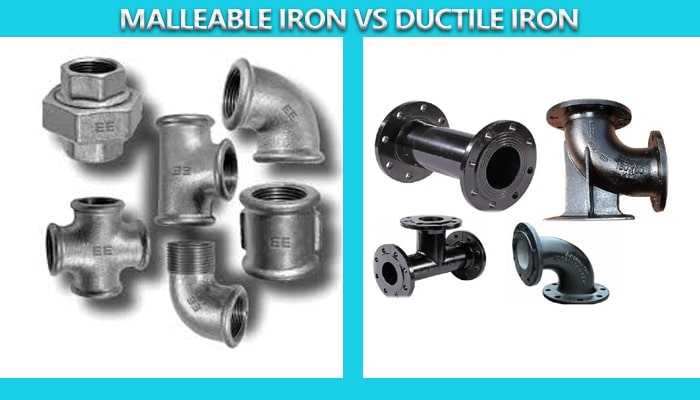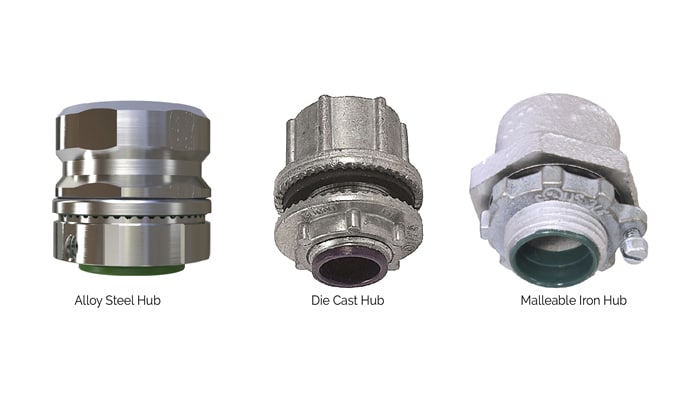When comparing malleable iron vs ductile iron, it’s important to recognize the unique properties and applications of each material. Malleable iron is known for its excellent ductility and ability to withstand stress, making it ideal for applications requiring complex shapes and forms, such as pipe fittings and agricultural machinery. In contrast, ductile iron, also known as spheroidal graphite iron, offers superior strength and impact resistance, making it suitable for heavy-duty applications like automotive components and construction materials. Both malleable iron and ductile iron play crucial roles in various industries, but the choice between them ultimately depends on the specific mechanical requirements and operational conditions of the intended application.
Malleable iron vs ductile iron: The two forms of cast iron are commonly utilized in diverse industrial applications. In this post, we will look at the distinctions between these two forms, as well as their qualities, applications, and benefits.
Malleable iron vs Ductile iron
Ductile Cast Iron Properties
Nodular cast iron, commonly known as ductile cast iron, is a form of cast iron distinguished by its nodular graphite structure. This structure offers ductile cast iron its distinct qualities, such as high strength, flexibility, and corrosion resistance.
Ductile cast iron has more carbon than malleable cast iron, making it more resistant to wear and tear. It also has a lower melting point, which makes casting and machining easier.
Malleable Cast Iron Properties
The flaky graphite structure of malleable cast iron, on the other hand, distinguishes it. This structure confers special features on malleable cast iron, such as great machinability, corrosion resistance, and durability.
Malleable cast iron contains less carbon than ductile cast iron, making it less resistant to wear and strain. It does, however, have a greater melting point, making it more suitable for applications requiring high heat resistance.

Ductile Cast Iron Applications
Ductile cast iron is often utilized in high strength and ductility applications. Such as the manufacture of gears, bearings, and other machinery components.
It also plays an important role in the automobile industry in making engine blocks, cylinder heads, and other components that need to be tough and resistant to wear and tear.
Malleable Cast Iron Applications
Malleable cast iron, on the other hand, is widely used in applications requiring great machinability. Such as the manufacture of pipe fittings, valves, and other components with precise dimensions and a smooth finish.
It’s also utilized in the construction business to make building hardware including door hinges, door knobs, and decorative fittings.
The Benefits of Ductile Cast Iron
Ductile cast iron offers various advantages over malleable cast iron, including greater strength, ductility, and corrosion resistance. It is also less expensive to cast and machine than malleable cast iron, making it a better choice for many applications.
Furthermore, ductile cast iron has a longer lifespan than malleable cast iron, making it a superior choice for long-term durability applications.

The Benefits of Malleable Cast Iron
Malleable cast iron, on the other hand, provides several advantages over ductile cast iron, including greater machinability, corrosion resistance, and durability. Because it has a greater melting point than ductile cast iron, it is also better suited for applications requiring strong heat resistance.
Furthermore, malleable cast iron is less expensive than ductile cast iron, making it a more cost-effective solution for a wide range of applications.
Conclusion
Today we talk about the difference between Malleable iron vs Ductile Iron. Finally, ductile cast iron and malleable cast iron are two separate forms of cast iron with differing qualities and applications. Ductile cast iron is distinguished by its nodular graphite structure. Moreover, it is popular in applications requiring high strength, ductility, and corrosion resistance.
Malleable cast iron, on the other hand, has a flaky graphite structure and is often utilized in applications requiring good machinability, corrosion resistance, and durability. Manufacturers can select the best material for their specific demands and requirements. By understanding the differences between these two forms of cast iron.
